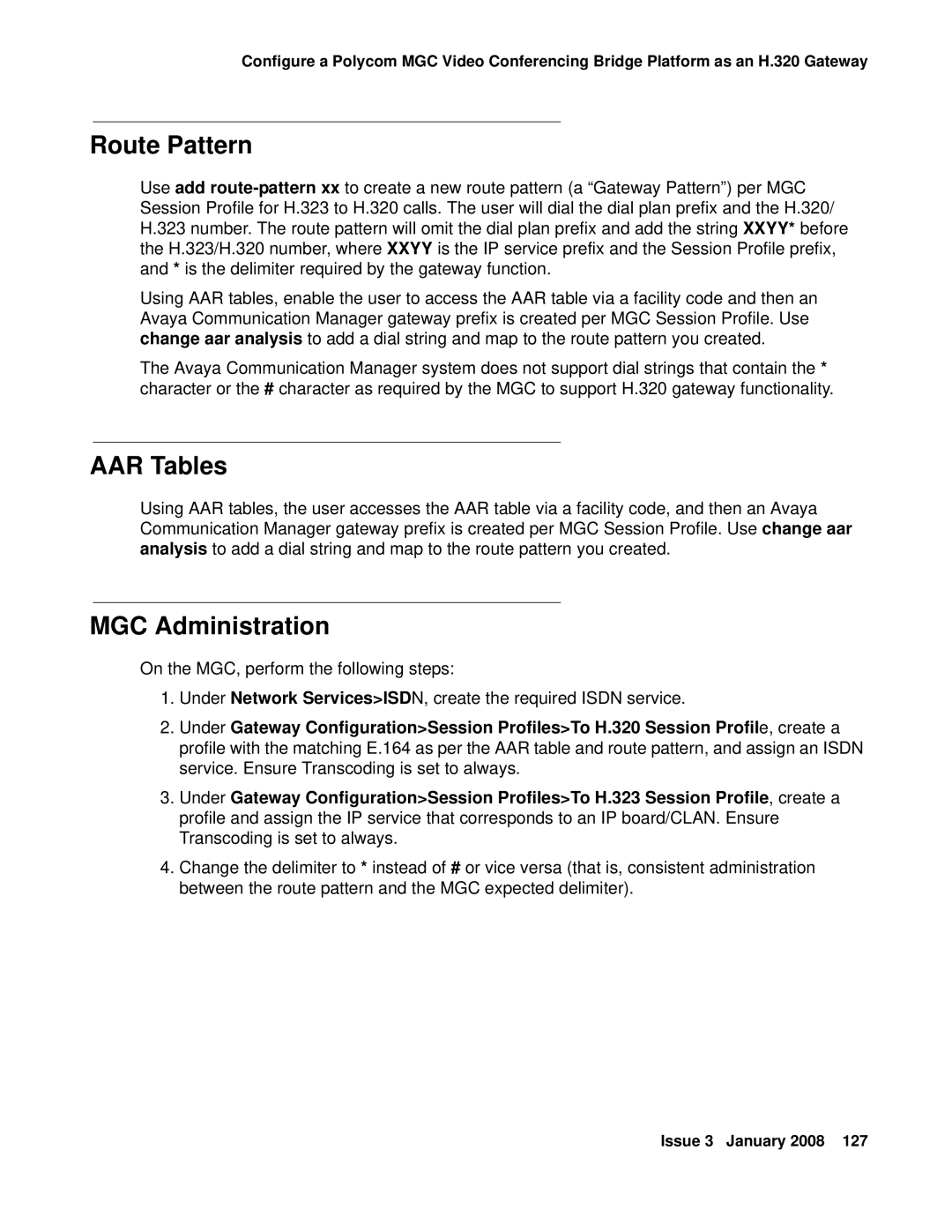
Configure a Polycom MGC Video Conferencing Bridge Platform as an H.320 Gateway
Route Pattern
Use add
Using AAR tables, enable the user to access the AAR table via a facility code and then an Avaya Communication Manager gateway prefix is created per MGC Session Profile. Use change aar analysis to add a dial string and map to the route pattern you created.
The Avaya Communication Manager system does not support dial strings that contain the * character or the # character as required by the MGC to support H.320 gateway functionality.
AAR Tables
Using AAR tables, the user accesses the AAR table via a facility code, and then an Avaya Communication Manager gateway prefix is created per MGC Session Profile. Use change aar analysis to add a dial string and map to the route pattern you created.
MGC Administration
On the MGC, perform the following steps:
1.Under Network Services>ISDN, create the required ISDN service.
2.Under Gateway Configuration>Session Profiles>To H.320 Session Profile, create a profile with the matching E.164 as per the AAR table and route pattern, and assign an ISDN service. Ensure Transcoding is set to always.
3.Under Gateway Configuration>Session Profiles>To H.323 Session Profile, create a profile and assign the IP service that corresponds to an IP board/CLAN. Ensure Transcoding is set to always.
4.Change the delimiter to * instead of # or vice versa (that is, consistent administration between the route pattern and the MGC expected delimiter).
